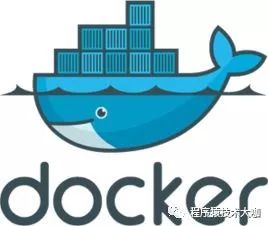I encounter S3 SignatureDoesNotMatch while trying to write Dataframe to S3 with Spark.
The symptom/things have tried:
- The code fail sometimes but works sometimes;
- The code can read from S3 without any problem, and be able to write to S3 from time to time, which rules out wrong config settings like S3A / enableV4 / Wrong Key / Region Endpoint etc.
- The S3A endpoint had been set according to the S3 docs S3 Endpoint;
- Made sure the
AWS_SECRETY_KEYdoes not contain any non-alphanumeric as per suggested here; - Made sure server time is in-sync by using NTP;
- The following was tested on EC2
m3.xlargewithspark-2.0.2-bin-hadoop2.7running on Local mode; - The issue is gone when the files are written to local fs;
- right now the workaround was to mount the bucket with s3fs and write to there; however this is not ideal as s3fs dies quite often from the stress Spark put to it;
The code can be boiled down to:
spark-submit\
--verbose\
--conf spark.hadoop.fs.s3n.impl=org.apache.hadoop.fs.s3native.NativeS3FileSystem \
--conf spark.hadoop.fs.s3.impl=org.apache.hadoop.fs.s3.S3FileSystem \
--conf spark.hadoop.fs.s3a.impl=org.apache.hadoop.fs.s3a.S3AFileSystem\
--packages org.apache.hadoop:hadoop-aws:2.7.3\
--driver-java-options '-Dcom.amazonaws.services.s3.enableV4'\
foobar.py
# foobar.py
sc = SparkContext.getOrCreate()
sc._jsc.hadoopConfiguration().set("fs.s3a.access.key", 'xxx')
sc._jsc.hadoopConfiguration().set("fs.s3a.secret.key", 'xxx')
sc._jsc.hadoopConfiguration().set("fs.s3a.endpoint", 's3.dualstack.ap-southeast-2.amazonaws.com')
hc = SparkSession.builder.enableHiveSupport().getOrCreate()
dataframe = hc.read.parquet(in_file_path)
dataframe.write.csv(
path=out_file_path,
mode='overwrite',
compression='gzip',
sep=',',
quote='"',
escape='\\',
escapeQuotes='true',
)
Spark spills the following error.
Set log4j to verbose, it appears the following had happened:
- Each individual will be output to staing location on S3
/_temporary/foorbar.part-xxx; - A PUT call will move the partitions into final location;
- After a few successfully PUT calls, all the subsequent PUT call failed due to 403;
- As the reuqets were made by aws-java-sdk, not sure what to do on application level; -- The following log were from another event with the exact same error;
>> PUT XXX/part-r-00025-ae3d5235-932f-4b7d-ae55-b159d1c1343d.gz.parquet HTTP/1.1
>> Host: XXX.s3-ap-southeast-2.amazonaws.com
>> x-amz-content-sha256: e3b0c44298fc1c149afbf4c8996fb92427ae41e4649b934ca495991b7852b855
>> X-Amz-Date: 20161104T005749Z
>> x-amz-metadata-directive: REPLACE
>> Connection: close
>> User-Agent: aws-sdk-java/1.10.11 Linux/3.13.0-100-generic OpenJDK_64-Bit_Server_VM/25.91-b14/1.8.0_91 com.amazonaws.services.s3.transfer.TransferManager/1.10.11
>> x-amz-server-side-encryption-aws-kms-key-id: 5f88a222-715c-4a46-a64c-9323d2d9418c
>> x-amz-server-side-encryption: aws:kms
>> x-amz-copy-source: /XXX/_temporary/0/task_201611040057_0001_m_000025/part-r-00025-ae3d5235-932f-4b7d-ae55-b159d1c1343d.gz.parquet
>> Accept-Ranges: bytes
>> Authorization: AWS4-HMAC-SHA256 Credential=AKIAJZCSOJPB5VX2B6NA/20161104/ap-southeast-2/s3/aws4_request, SignedHeaders=accept-ranges;connection;content-length;content-type;etag;host;last-modified;user-agent;x-amz-content-sha256;x-amz-copy-source;x-amz-date;x-amz-metadata-directive;x-amz-server-side-encryption;x-amz-server-side-encryption-aws-kms-key-id, Signature=48e5fe2f9e771dc07a9c98c7fd98972a99b53bfad3b653151f2fcba67cff2f8d
>> ETag: 31436915380783143f00299ca6c09253
>> Content-Type: application/octet-stream
>> Content-Length: 0
DEBUG wire: << "HTTP/1.1 403 Forbidden[\r][\n]"
DEBUG wire: << "x-amz-request-id: 849F990DDC1F3684[\r][\n]"
DEBUG wire: << "x-amz-id-2: 6y16TuQeV7CDrXs5s7eHwhrpa1Ymf5zX3IrSuogAqz9N+UN2XdYGL2FCmveqKM2jpGiaek5rUkM=[\r][\n]"
DEBUG wire: << "Content-Type: application/xml[\r][\n]"
DEBUG wire: << "Transfer-Encoding: chunked[\r][\n]"
DEBUG wire: << "Date: Fri, 04 Nov 2016 00:57:48 GMT[\r][\n]"
DEBUG wire: << "Server: AmazonS3[\r][\n]"
DEBUG wire: << "Connection: close[\r][\n]"
DEBUG wire: << "[\r][\n]"
DEBUG DefaultClientConnection: Receiving response: HTTP/1.1 403 Forbidden
<< HTTP/1.1 403 Forbidden
<< x-amz-request-id: 849F990DDC1F3684
<< x-amz-id-2: 6y16TuQeV7CDrXs5s7eHwhrpa1Ymf5zX3IrSuogAqz9N+UN2XdYGL2FCmveqKM2jpGiaek5rUkM=
<< Content-Type: application/xml
<< Transfer-Encoding: chunked
<< Date: Fri, 04 Nov 2016 00:57:48 GMT
<< Server: AmazonS3
<< Connection: close
DEBUG requestId: x-amzn-RequestId: not available



